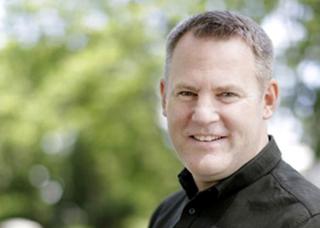The value of engagement: An interview with Darren Dahl


Darren Dahl, Senior Associate Dean of Faculties and Director of the Graduate School at the Sauder School of Business, works with faculty in the hiring, development, and tenure process for research faculty and also supervises 36 staff. Here, he shares his perspective on why workplace engagement matters.
Q: How does an engaged staff or faculty member “show up” at Sauder?
DD: We get engaged in different ways depending on who we are. For some people, it’s doing the job in a state where you’re just really into it, sometimes called flow, and bringing research to fruition at the highest level possible.
Collegiality is very important at Sauder, so ‘showing up’ can also be getting involved in events and opportunities, or getting involved with students’ extracurricular activities and mentoring them.
These are the people you want on your team. You want to work with people that are excited—not necessarily jumping-up-and-down-kooky-excited—but people who are positive.
Q: When it comes to fostering engagement, what works?
DD: One thing we’ve worked on at Sauder is the orientation we give to new faculty. How you onboard people is critical. You have to start from a positive place.
What matters to faculty is that they can pursue what they’re passionate about…to feel the Sauder School as a whole is supporting them, is going in the direction they’re going, and is excited in the same way.
Q: Shouldn’t we focus on student engagement instead?
DD: Student engagement should be the number one priority in the classroom. Full stop. If the students aren’t engaged, we’re not doing our job. If we’re not doing our job, are we going to be here in 10 years?
Q: How do we create a workplace culture that values engagement?
DD: You can see organizations with specific types of values embedded in their culture, like WestJet or Lululemon. A value will become a norm if truly it becomes embedded from cradle (the hiring process) to grave. An engaged employee correlates with many aspects, including creativity and innovation. That’s important to me so, in an interview, I might ask you about a time when you tried something new, when you failed, or when you experimented. That tells me if you’re a creative and innovative person and if you’re a fit for the team.
Q: UBC offers the Workplace Experiences Survey every three years. Why is this something we need to pay attention to?
DD: Because I think we can do better. Any organization serious about workplace culture is going to ask this type of question. There’s always room to improve. So to me, we need to pay attention because we can make UBC better.
Q: How is this survey relevant for faculty?
DD: It’s a snapshot of how faculty are feeling, just like it is for staff. I think that’s important. We look at it here in Sauder because it shows areas where, frankly, we need to improve. It’s a nice benchmarking exercise that really enables the dean’s office to set priorities and strategy.
Q: How can we facilitate faculty and staff engagement?
DD: First, being transparent and letting people understand what’s going on. Second, giving people a voice or a role to play in terms of what’s going on, such as strategy, planning or participating in a survey. Third, understanding the social effects. Understand the disbelievers and understand how to manage the disbelievers. Fourth, talking about outcomes. Why should I care if the survey doesn’t change anything?
Q: Who should be accountable?
DD: It goes back to leadership. Leaders set the example and set the bar. We don’t want people to look at the survey and say, “Oh, that’s interesting,” and that’s where the conversation ends. You have to set resources – time, energy, space – to it and have a strategy. For faculty, you’ve been hired to do a job at the university and the tenure and promotion process is a question of accountability. We want faculty to get tenured, to get promoted. If they aren’t engaged, they may run into some difficulty.
Engagement is contagious. When you’re engaged and enjoying what you’re doing, you are going to deliver to the people around you. You care about other people you work with; you’re interested in them as people and in helping them succeed.
Find the latest news, updates, events, and useful dates from across UBC, curated for faculty and staff by Internal Communications.
Access a library of resources from multiple UBC websites, all in one place.